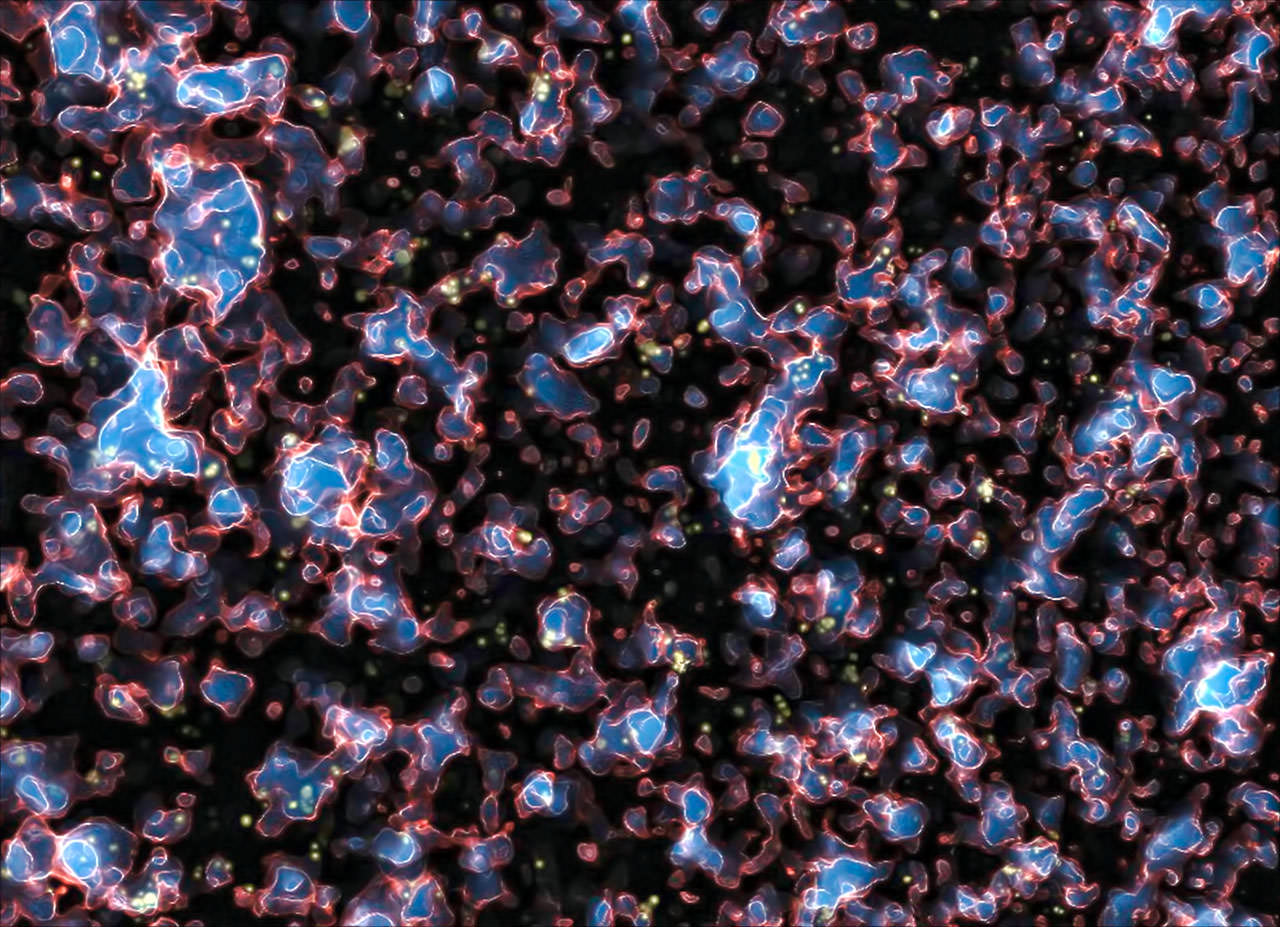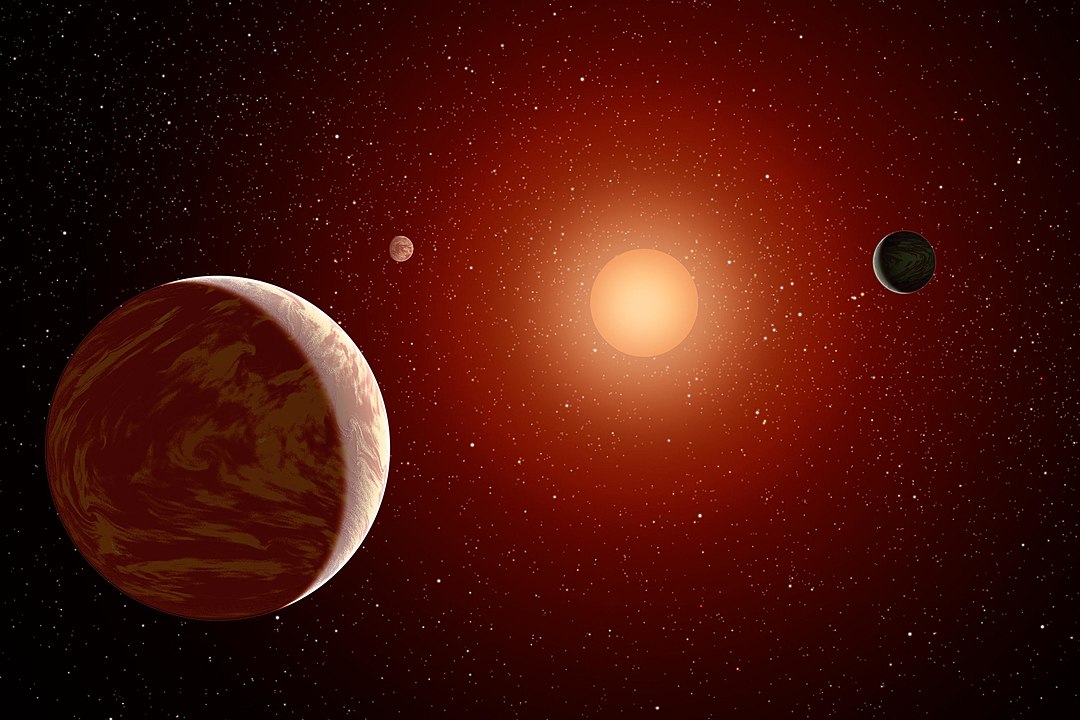Cosmology has had several ground-breaking discoveries over the last 100+ years since Einstein developed his theory of relativity. Two of the most prominent were the discovery of the Cosmic Microwave Background (CMB) in 1968 and the confirmation of gravitational waves in 2015. Each utilized different tools, but both lent credence to the Big Bang Theory, which relates to the universe’s formation. However, we still don’t understand a vital part of that formation, and a new review paper by Rishav Roshan and Graham White at the University of Southampton suggests that we might be able to make some headway on our one-second “gap” in knowledge by using our newfound understanding of gravitational waves.
Continue reading “How Gravitational Waves Could Let Us See the First Moments After the Big Bang”Can an Asteroid's Movements Reveal a New Force in the Universe?
There are four fundamental forces in the Universe. These forces govern all the ways matter can interact, from the sound of an infant’s laugh to the clustering of galaxies a billion light-years away. At least that’s what we’ve thought until recently. Things such as dark matter and dark energy, as well as a few odd interactions in particle physics, have led some researchers to propose a fifth fundamental force. Depending on the model you consider, this new force could explain dark matter and cosmic expansion, or it could interact with elemental particles we haven’t yet detected. There are lots of theories about this hypothetical force. What there isn’t a lot of is evidence. So a new study is looking for evidence in the orbits of asteroids.
Continue reading “Can an Asteroid's Movements Reveal a New Force in the Universe?”New Research Could Help Resolve the “Three-Body Problem”

Perhaps you’ve heard of the popular Netflix show and the science fiction novel on which it is based, The Three-Body Problem, by Chinese science fiction author Liu Cixin. The story’s premise is a star system where three stars orbit each other, which leads to periodic destruction on a planet orbiting one of them. As Isaac Newton described in his Philosophiæ Naturalis Principia Mathematica, the interaction of two massive bodies is easy to predict and calculate. However, the interaction of three bodies leads is where things become unpredictable (even chaotic) over time.
This problem has fascinated scientists ever since and remains one of the most famous unsolved mysteries in mathematics and theoretical physics. The theory states that the interaction of three gravitationally bound objects will evolve chaotically and in a way that is completely detached from their initial positions and velocities. However, in a recent study, an international team led by a researcher from the Niels Bohr Institute ran millions of simulations that showed “isles of regularity in a sea of chaos.” These results indicate that there could be a solution, or at least some predictability, to the Three-Body Problem.
Continue reading “New Research Could Help Resolve the “Three-Body Problem””Webb Observations Shed New Light on Cosmic Reionization

The “Epoch of Reionization” was a critical period for cosmic evolution and has always fascinated and mystified astronomers. During this epoch, the first stars and galaxies formed and reionized the clouds of neutral hydrogen that permeated the Universe. This ended the Cosmic Dark Ages and led to the Universe becoming “transparent,” what astronomers refer to as “Cosmic Dawn.” According to our current cosmological models, reionization lasted from 380,000 to 1 billion years after the Big Bang. This is based on indirect evidence since astronomers have been unable to view the Epoch of Reionization directly.
Investigating this period was one of the main reasons for developing the James Webb Space Telescope (JWST), which can pierce the veil of the “dark ages” using its powerful infrared optics. However, observations provided by Webb revealed that far more galaxies existed in the early Universe than previously expected. According to a recent study, this suggests that reionization may have happened more rapidly and ended at least 350 million years earlier than our models predict. Once again, the ability to peer into the early Universe has produced tensions with prevailing cosmological theories.
Continue reading “Webb Observations Shed New Light on Cosmic Reionization”SpaceX’s Mechazilla Catches a Starship Booster on First Try

For the first time ever, SpaceX has followed through on a Starship test launch by bringing back the Super Heavy booster for an on-target catch in the arms of its “Mechazilla” launch-tower cradle in Texas.
“This is a day for the engineering history books,” SpaceX launch commentator Kate Tice said.
Today’s successful catch marks a giant step toward using — and reusing — Starship for missions ranging from satellite deployments to NASA’s moon missions to migrations to Mars.
Continue reading “SpaceX’s Mechazilla Catches a Starship Booster on First Try”A Possible Exomoon Could be Volcanic, like Jupiter’s Moon Io

In 2012, astronomers detected a gas giant transiting in front of WASP-49A, a G-type star located about 635 light-years from Earth. The data obtained by the WASP survey indicated that this exoplanet (WASP-49 b) is a gas giant roughly the same size as Jupiter and 37% as massive. In 2017, WASP-49 b was found to have an extensive cloud of sodium, which was confounding to scientists. Further observations in 2019 using the Hubble Space Telescope detected the presence of other minerals, including magnesium and iron, which appeared to be magnetically bound to the gas giant.
WASP-49 b and its star are predominantly composed of hydrogen and helium, with only trace amounts of sodium – not enough to account for this cloud. In addition, there was no indication of how this sodium cloud was ejected into space. In our Solar System, gas emissions from Jupiter’s volcanic moon Io create a similar phenomenon. In a recent study, an international team led by scientists from NASA’s Jet Propulsion Laboratory found potential evidence of a rocky, volcanic moon orbiting WASP-49 b. While not yet confirmed, the presence of a volcanic exomoon around this gas giant could explain the presence of this sodium cloud.
Continue reading “A Possible Exomoon Could be Volcanic, like Jupiter’s Moon Io”A Black Hole has Destroyed a Star, and Used the Wreckage to Pummel Another Star
When a supermassive black hole consumes a star, it doesn’t just swallow it whole. It shreds the star, ripping it apart bit by bit before consuming the remains. It’s a messy process known as a tidal disruption event (TDE). Astronomers occasionally catch a glimpse of TDEs, and one recent one has helped solve a mystery about a type of transient X-ray source.
Continue reading “A Black Hole has Destroyed a Star, and Used the Wreckage to Pummel Another Star”Satellites are Tracking the Ongoing Sea Level Rise Swamping Pacific Island Nations

The small island nations of the South Pacific are facing the harsh reality of sea level rise. Within 50 years they will be swamped by rising seas linked to climate change. That’s part of a stark forecast from a sea level change science team at NASA and leading universities.
Continue reading “Satellites are Tracking the Ongoing Sea Level Rise Swamping Pacific Island Nations”Exoplanet Discovered in a Binary System Could Explain Why Red Dwarfs Form Massive Planets

In recent years, the number of known extrasolar planets (aka. exoplanets) has grown exponentially. To date, 5,799 exoplanets have been confirmed in 4,310 star systems, with thousands more candidates awaiting confirmation. What has been particularly interesting to astronomers is how M-type (red dwarf) stars appear to be very good at forming rocky planets. In particular, astronomers have detected many gas giants and planets that are several times the mass of Earth (Super-Earths) orbiting these low-mass, cooler stars.
Consider TOI-6383A, a cool dwarf star less than half the mass of the Sun that orbits with an even smaller, cooler companion – the red dwarf star TOI-6383B. In a recent study, an international team of astronomers with the Searching for Giant Exoplanets around M-dwarf Stars (GEMS) survey detected a giant planet transiting in front of the primary star, designated TOI-6383Ab. This planet is similar in size and mass to the system’s companion star, which raises questions about the formation of giant planets in red dwarf star systems.
Continue reading “Exoplanet Discovered in a Binary System Could Explain Why Red Dwarfs Form Massive Planets”Most Mars Meteorites Came From Five Craters

Meteorites strike Earth every day. It’s estimated that about 100 – 300 metric tonnes of material strike our planet every year. Most of it consists of sand-grain sized dust that burns up in the atmosphere, but each year a few thousand will reach Earth’s surface.
Continue reading “Most Mars Meteorites Came From Five Craters”


